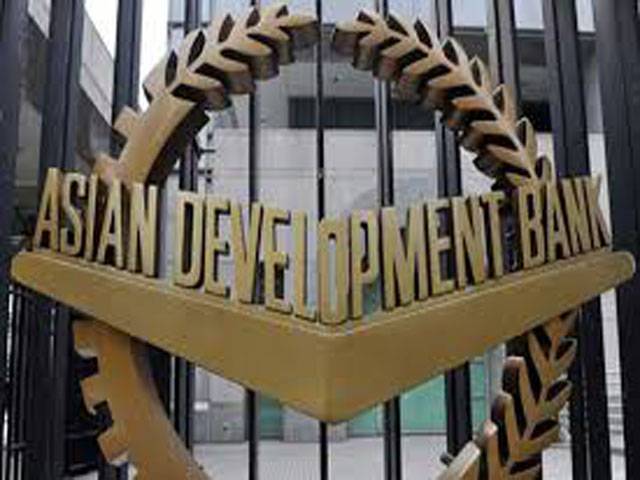ISLAMABAD - Assuming further improvement in energy supply and security, and likely recovery in agriculture, the Asian Development Bank (ADB) on Tuesday forecasted Pakistan's economic growth at 5.2 percent for the current fiscal year.
The ADB's growth projection is below than the government's target of 5.5 percent for ongoing financial year FY2017. "A major impetus to growth in FY2017 and beyond will be the implementation of $46 billion programme of infrastructure spending on roads, railways, pipelines, and electric power in an economic corridor project linking Pakistan with the People's Republic of China (PRC)," according to the latest 'Asian Development Outlook 2016 update'.
Inflation is expected to increase to 4.7 percent in FY2017 from 2.9 percent of FY2016 due to expected oil price rises and stronger domestic demand in an increasingly supply constrained economy. The ADB's report noted that current account deficit is expected to widen in FY2017 to about $5 billion, or 1.6 % of GDP as against 0.9% of GDP of the previous year.
The report highlighted key challenges regarding governance and security issues, reviving agriculture and improving its productivity, increasing exports and attracting investment, strengthening public enterprises, and improving the business and regulatory environment. Meanwhile, it stated that government significantly strengthened macroeconomic fundamentals and advanced a comprehensive programme of structural reforms under a 3-year programme with the IMF that ended in September 2016. Inflation has been squashed to the low single digits, foreign reserves rebuilt, and the budget deficit markedly reduced. Tax reform was launched to improve revenue performance, and substantial progress achieved toward restructuring the power sector.
The Bank has projected that budget deficit would reduce to 3.8 percent of the GDP in FY2017 from 4.4 percent of GDP in FY2016 by adopting new revenue measures and streamlining current expenditure. Tax revenues are projected to increase by half a percentage point, raising the ratio of tax to GDP to 12.8% by eliminating more tax concessions and exemptions, expanding the withholding system as part of administrative reform to widen the tax base, and raising some excise taxes and customs duties. Including non-tax and provincial tax revenue, total budgeted revenue amounts to 15.8% of GDP. Current expenditure is to be held to 15.8% of GDP, mainly by economizing on non-critical spending and further reducing energy subsidies, to allow the public sector development program to expand by 18.4%.
Exports are expected to perform better during the year and likely to increase by nearly 5% as a recovery in cotton production underpins an upturn in textile sales, and as global prices for non-oil commodities reverse from a sharp decline to a modest increase. Total exports are not expected to recover to the FY2014 level, however, as little if any improvement in global demand is expected, forestalling any major boost for food or manufacture exports. Construction cutbacks in the Gulf, where most Pakistani overseas workers are employed, will slow growth in remittances. However, remittances will likely be sufficient to hold in check deficits in trade and other payments in the current account.
"The mobilization of larger inflows into the capital and financial accounts has been central to the 3-year economic program with the IMF, and these flows are projected to increase to $6.5 billion in FY2017, mainly with more foreign direct investment and continuing sizeable official flows. Thus, even with the projected widening of the current account deficit, the overall balance should remain in surplus, augmenting official reserves", stated the report.
The corridor project with the China is expected to attract more foreign direct investment, and already in 2015 investors announced 40 green field projects worth a remarkable $19 billion, or 4 times the norm in recent years. Although implementation will extend over several years, the large increase signaled the catalytic effect of the corridor project and success in making Pakistan a stable destination attractive to foreign investment. Moreover, the decision by Morgan Stanley Capital International to put Pakistan in its MSCI emerging market index, effective from May 2017, will likely spur equity portfolio inflows.
Risks to the economic outlook in the short term are unexpectedly high oil prices or a marked slowing of remittances. Further down the road, the end of the IMF programme could relax focus on monetary and fiscal discipline, especially with a parliamentary election scheduled for 2018, and distract attention from the structural reform agenda that is essential to maintaining sustainable and equitable growth.
The report reported GDP growth at 4.7% in FY2016. Total investment grew by 5.7%, well below the 14.1% increase in FY2015, when both public and private consumption expanded by unusual margins. Meanwhile, export volume fell by 4.5%. Fixed capital formation continued to languish, reflecting a legacy of persistent power and gas shortages that have constrained investment and growth. Government investment increased by 13.6% while public enterprise spending rose only slightly, marginally lifting total public sector fixed investment to 3.8% of GDP. Private investment grew by only 3.3% despite a more upbeat economic environment, slipping to 9.8% of GDP from 10.2%.






